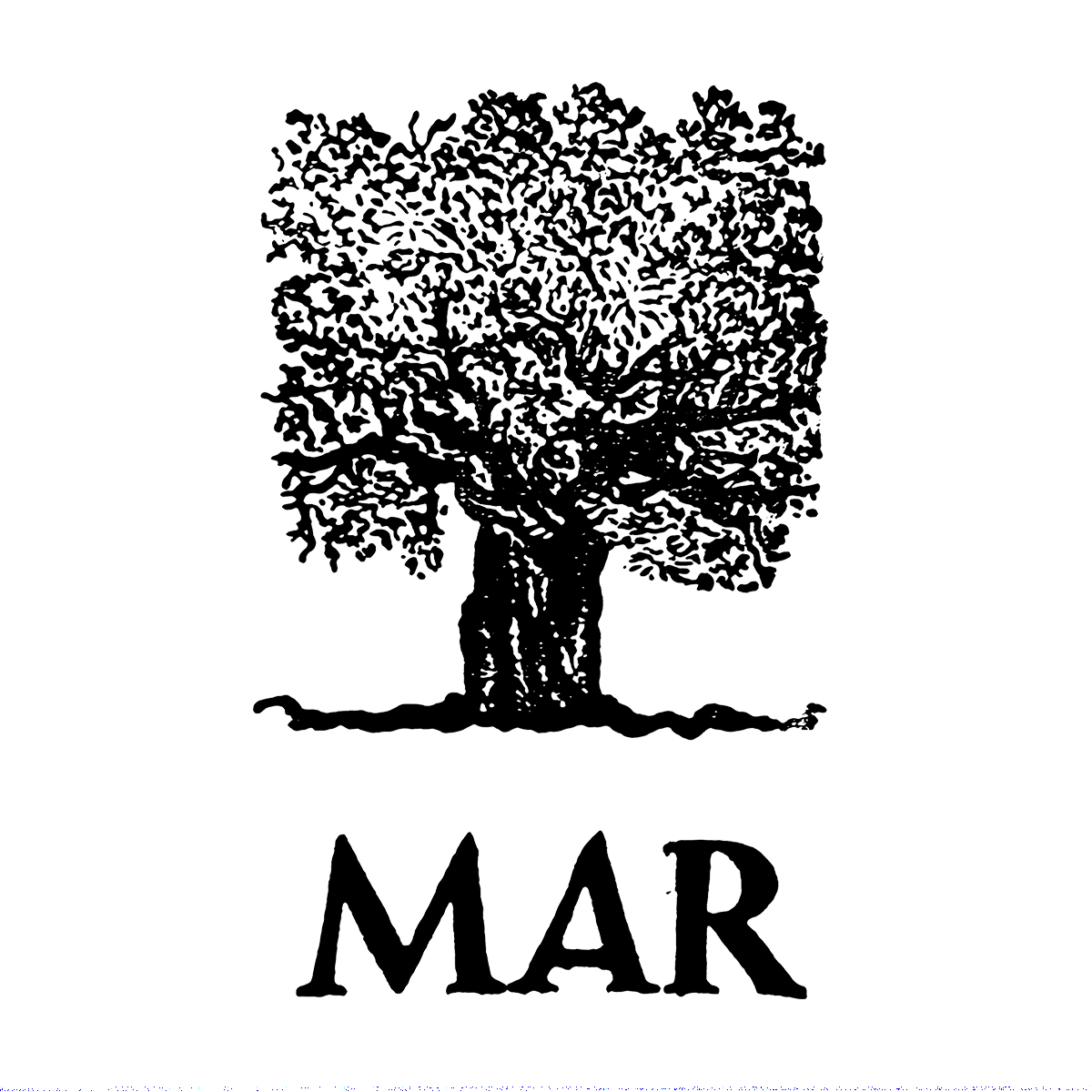Austeja Platukyte, a materials researcher and product designer from Vilnius, Lithuania. In her research, she focuses on the material flows and traces we leave behind as a species; and designs biodegradable art objects which can be considered independent entities, creating their own story - collaborating with natural/environmental processes and transforming into new hybrid materials that will become new art forms.
At MAR, Austeja Platukyte worked on a new project that is dominated by temporality; a type of art that doesn't want to be put on a pedestal or displayed in the white room. Her idea was to kick-start a different way of thinking: if art is doomed to a world that breaks down as a direct part of the sediment of human activity, how can creative practices be devoted to social, cultural, and political spheres that will survive only in the thin geological layer of the Earth? Or should we rethink mankind's contribution to the world-forming processes to remark on the legacy of humanity's activity and identity?
As a result, she created ‘Sphan - Land of Rabbits’ - etymological origin of Spain comes from the Carthaginian word 'sphan' which means rabbit - is a biodegradable art object composed of rabbit feces and dried grass, and documented her process. During her stay, Austėja encountered wild rabbits in the area, which led her to research their digestive system and feces. Rabbits are coprophagic animals, meaning, they reingest their own droppings in order to utilize nutrients that are initially absorbed ineffectively. These types of feces are commonly known as 'night droppings' and are eaten immediately after defecation. Whereas, the pellets left behind by a rabbit are the final waste product after the redigestion of night droppings. According to her, this is a remarkable example of the circular economy in nature and a great chance to experiment with new alternative hay-like material. After weeks of collecting and processing, she created her first earth art piece that will decompose and find a new purpose back at the very spot where she collected the droppings; a pivotal point in Austeja's art practice, where she transformed her designs into amorphous yet everlasting layers.

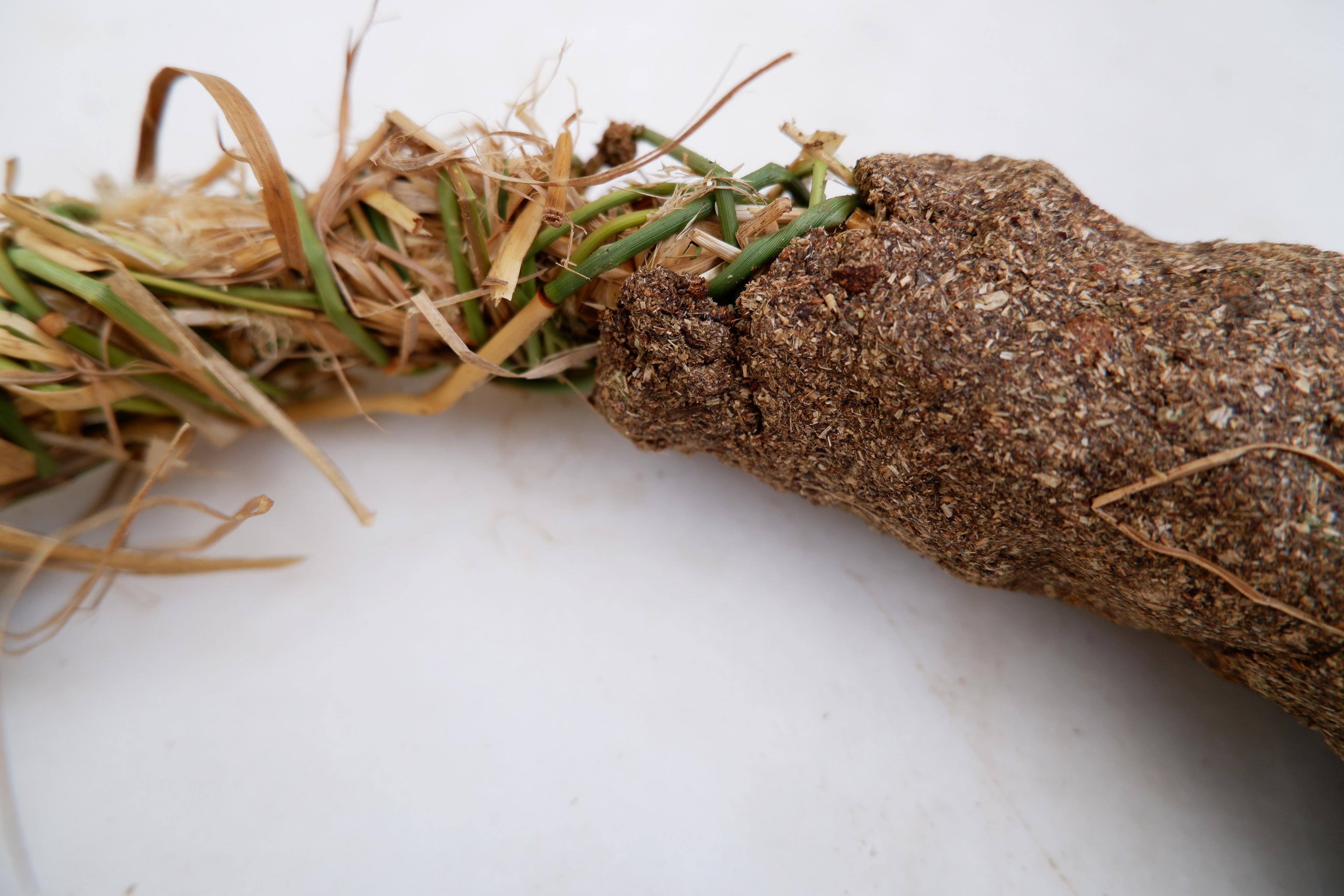
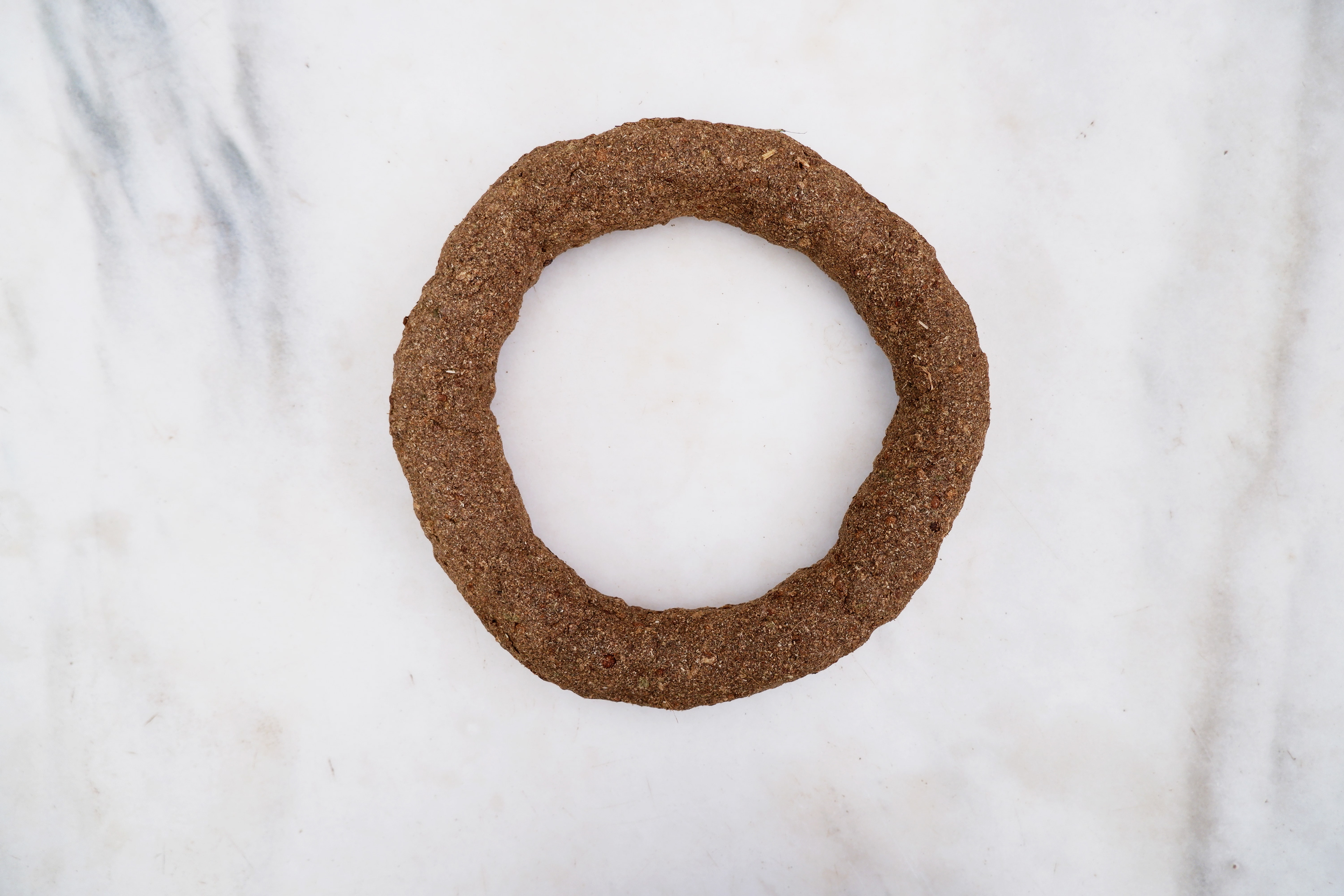
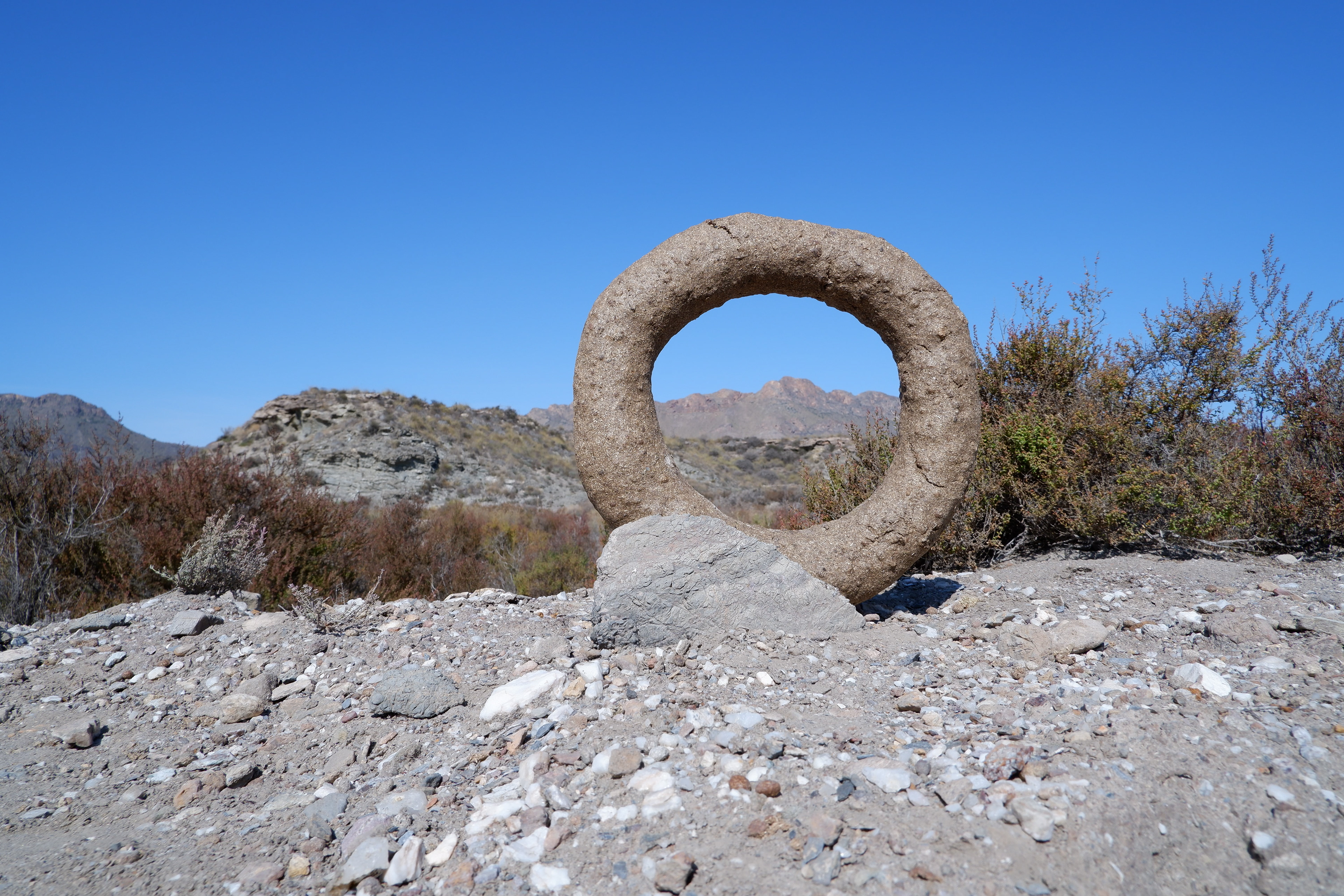
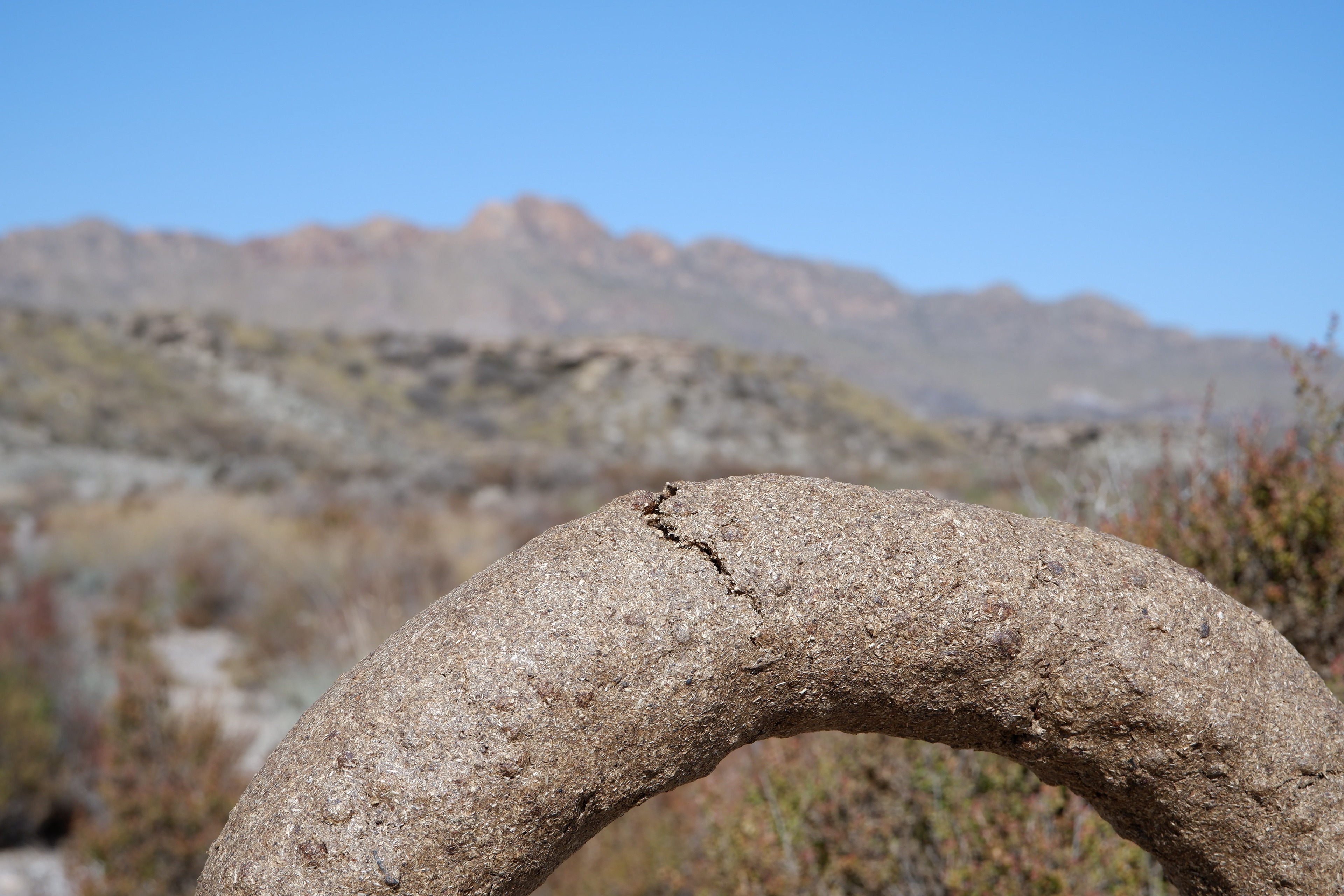


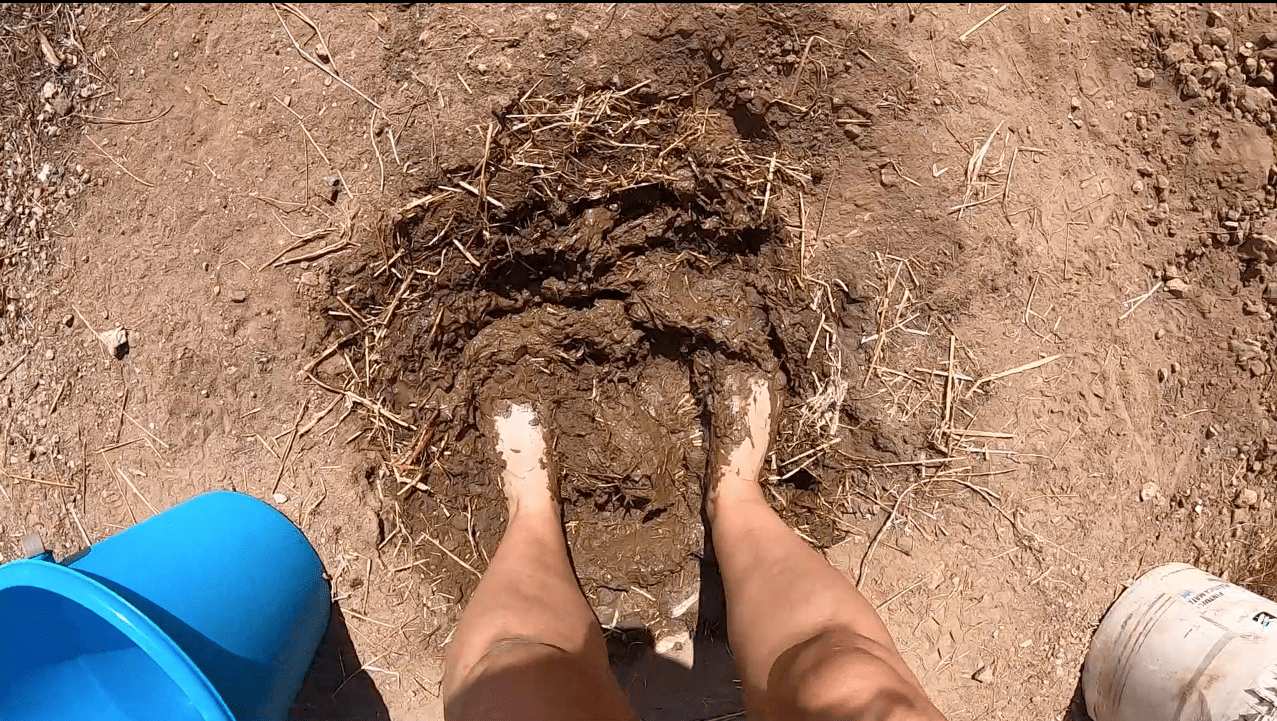
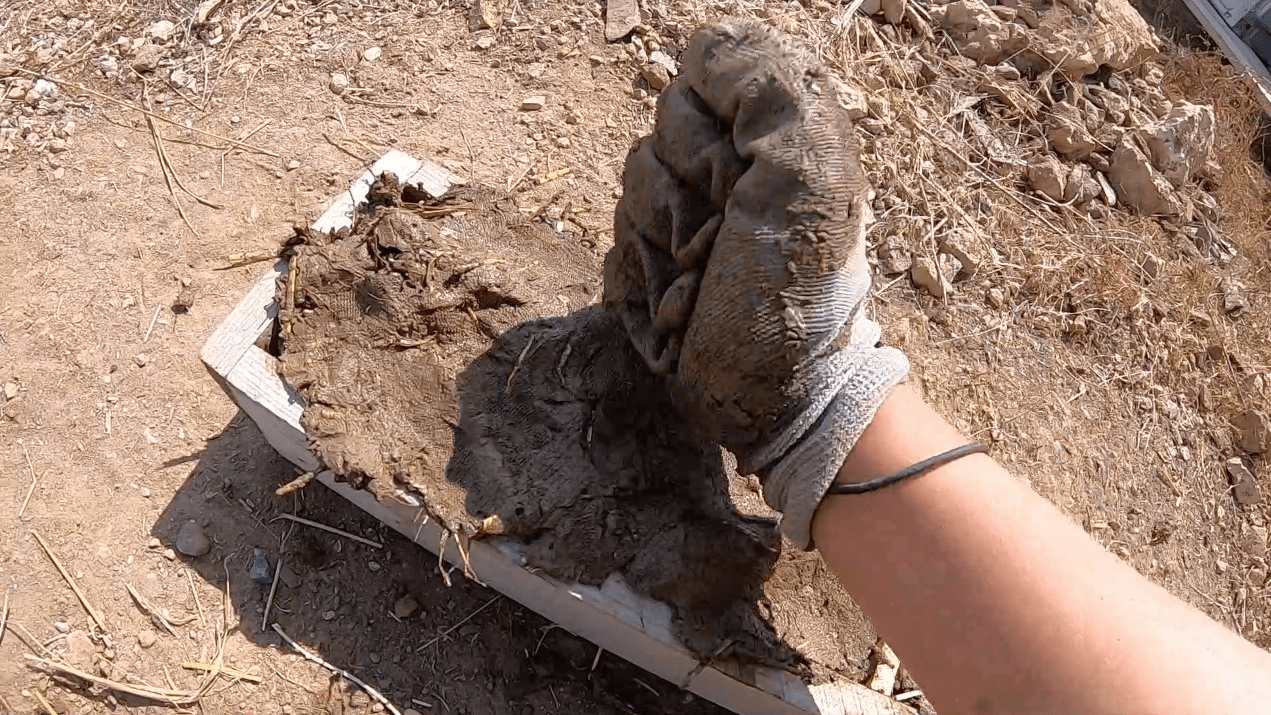
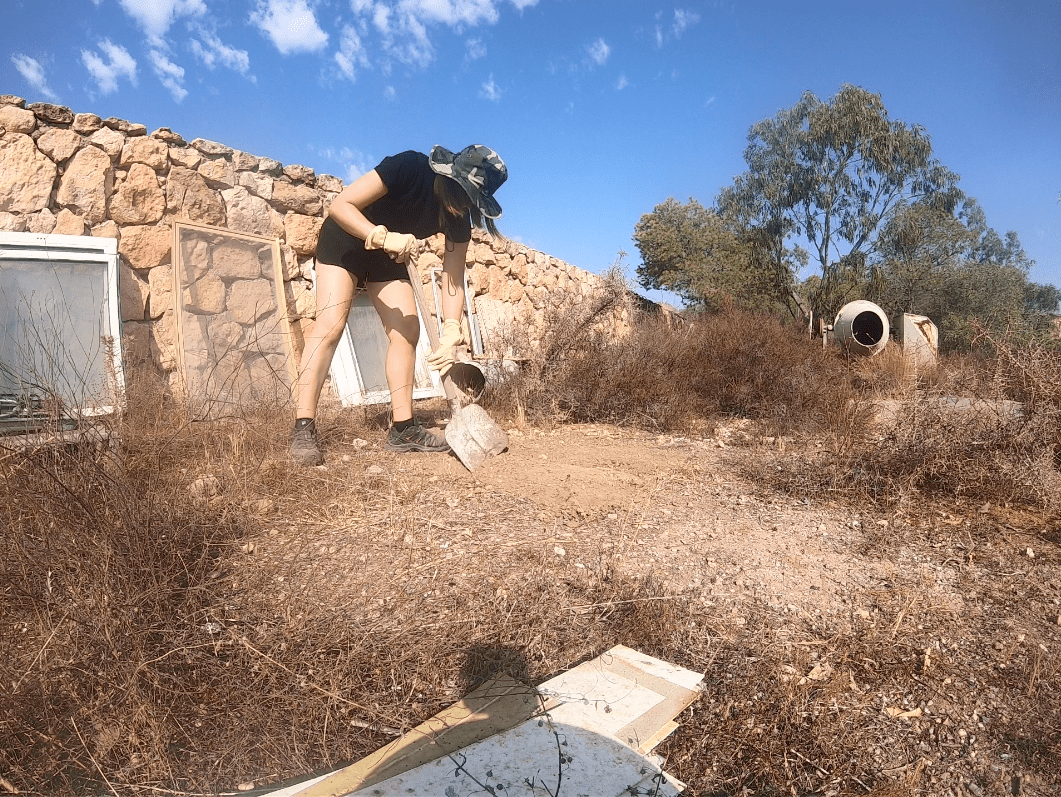
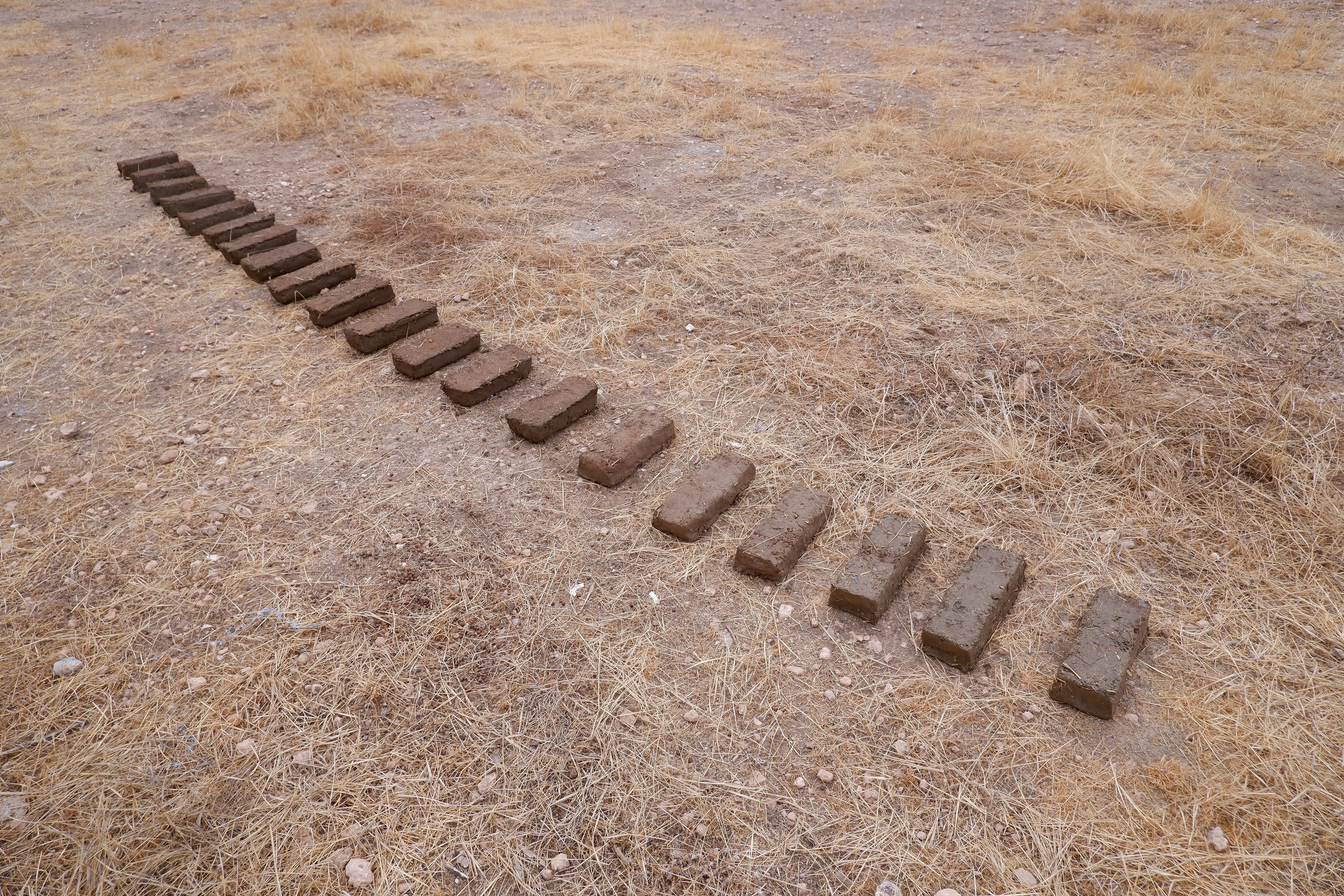
Photos by Austeja Platukyte
